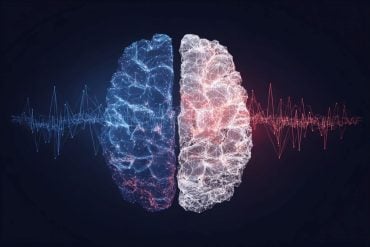Summary: Researchers have developed an AI method that can predict Alzheimer’s Disease up to seven years before the onset of symptoms, utilizing machine learning to analyze patient records.
Their study highlights high cholesterol and osteoporosis—particularly in women—as key predictors, showcasing AI’s potential to unveil complex disease patterns and biological drivers. By integrating clinical data with genetic databases through tools like UCSF’s SPOKE, the team has identified genes linked to Alzheimer’s, offering new avenues for early diagnosis and understanding the interplay between different health conditions and Alzheimer’s risk.
This approach promises to enhance precision medicine for Alzheimer’s and other challenging diseases.
Key Facts:
- Early Prediction through AI: Machine learning applied to clinical data can predict Alzheimer’s onset with 72% accuracy up to seven years in advance.
- Significant Predictors Identified: High cholesterol and osteoporosis are significant predictors of Alzheimer’s, with osteoporosis being a notable factor for women.
- Genetic Insights Unveiled: Using UCSF’s SPOKE, researchers connected Alzheimer’s risk to specific genes, including a link between osteoporosis and Alzheimer’s in women through the MS4A6A gene.
Source: UCSF
UC San Francisco scientists have found a way to predict Alzheimer’s Disease up to seven years before symptoms appear by analyzing patient records with machine learning.
The conditions that most influenced prediction of Alzheimer’s were high cholesterol and, for women, the bone-weakening disease osteoporosis.
The work demonstrates the promise of using artificial intelligence (AI) to spot patterns in clinical data that can then be used to scour large genetic databases to determine what is driving that risk. The researchers hope that one day it will hasten the diagnosis and treatment of Alzheimer’s and other complex diseases.

“This is a first step towards using AI on routine clinical data, not only to identify risk as early as possible, but also to understand the biology behind it,” said the study’s lead author, Alice Tang, an MD/PhD student in the Sirota Lab at UCSF.
“The power of this AI approach comes from identifying risk based on combinations of diseases.”
The findings appear Feb. 21, 2024, in Nature Aging.
Clinical data and the power of prediction
Scientists have long sought to discover the biological drivers and early predictors of Alzheimer’s Disease, a progressive and ultimately fatal form of dementia that destroys memory. Alzheimer’s affects some 6.7 million Americans, nearly two-thirds of whom are women. The risk of getting the disease increases with age, and women tend to live longer than men, but that does not fully explain why more women than men have it.
The researchers used UCSF’s clinical database of more than 5 million patients to look for co-occurring conditions in patients who had been diagnosed with Alzheimer’s at UCSF’s Memory and Aging Center in comparison to individuals without AD and found they could identify with 72% predictive power who would develop the disease up to seven years prior.
Several factors, including hypertension, high cholesterol and vitamin D deficiency, were predictive in both men and women. Erectile dysfunction and an enlarged prostate were also predictive for men. But for women, osteoporosis was a particularly important predictor.
This does not mean that everyone with the bone disease, which is common among older women, will get Alzheimer’s.
“It is the combination of diseases that allows our model to predict AD onset,” said Tang, “Our finding that osteoporosis is one predictive factor for females highlights the biological interplay between bone health and dementia risk.”
A precision medicine approach
To understand the biology underlying the model’s predictive power, the researchers turned to public molecular databases and a specialized tool developed at UCSF called SPOKE (Scalable Precision Medicine Oriented Knowledge Engine), which was developed in the lab of Sergio Baranzini, PhD, a professor of neurology and a member of the UCSF Weill Institute for Neurosciences.
SPOKE is essentially a database of databases that researchers can use to identify patterns and potential molecular targets for therapy. It picked up the well-known association between Alzheimer’s and high cholesterol, through a variant form of the apolipoprotein E gene, APOE4. But, when combined with genetic databases, it also identified a link between osteoporosis and Alzheimer’s in women, through a variant in a lesser-known gene, called MS4A6A.
Ultimately, the researchers hope the approach can be used with other hard-to-diagnose diseases like lupus and endometriosis.
“This is a great example of how we can leverage patient data with machine learning to predict which patients are more likely to develop Alzheimer’s, and also to understand the reasons why that is so,” said the study’s senior author, Marina Sirota, PhD, associate professor at the Bakar Computational Health Sciences Institute at UCSF.
Authors: Additional UCSF co-authors include Katherine P. Rankin, PhD, Gabriel Cerono, MD, Silvia Miramontes, MIDS, Hunter Mills, MS, Jacquelyn Roger, PhD student, Billy Zeng, MD, Charlotte Nelson, PhD, Karthik Soman, PhD, Sarah Woldemariam, Yaqio Li, PhD, Albert Lee, MADS, Riley Bove, MD, Tomiko Oskotsky, MD, Zachary Miller, MD, Isabel Allen, PhD, Stephan J. Sanders, PhD, and Sergio Baranzini, PhD.
Funding: The National Institute on Aging provided the primary support for this study (grant R01AG060393). Additional support was provided by the Medical Scientist Training Program (T32GM007618) and F30 Fellowship (1F30AG079504-01).
About this AI and Alzheimer’s disease research news
Author: Victoria Colliver
Source: UCSF
Contact: Victoria Colliver – UCSF
Image: The image is credited to Neuroscience News
Original Research: Open access.
“Leveraging electronic health records and knowledge networks for Alzheimer’s disease prediction and sex-specific biological insights” by Alice Tang et al. Nature Aging
Abstract
Leveraging electronic health records and knowledge networks for Alzheimer’s disease prediction and sex-specific biological insights
Identification of Alzheimer’s disease (AD) onset risk can facilitate interventions before irreversible disease progression. We demonstrate that electronic health records from the University of California, San Francisco, followed by knowledge networks (for example, SPOKE) allow for (1) prediction of AD onset and (2) prioritization of biological hypotheses, and (3) contextualization of sex dimorphism.
We trained random forest models and predicted AD onset on a cohort of 749 individuals with AD and 250,545 controls with a mean area under the receiver operating characteristic of 0.72 (7 years prior) to 0.81 (1 day prior). We further harnessed matched cohort models to identify conditions with predictive power before AD onset.
Knowledge networks highlight shared genes between multiple top predictors and AD (for example, APOE, ACTB, IL6 and INS). Genetic colocalization analysis supports AD association with hyperlipidemia at the APOE locus, as well as a stronger female AD association with osteoporosis at a locus near MS4A6A.
We therefore show how clinical data can be utilized for early AD prediction and identification of personalized biological hypotheses.







